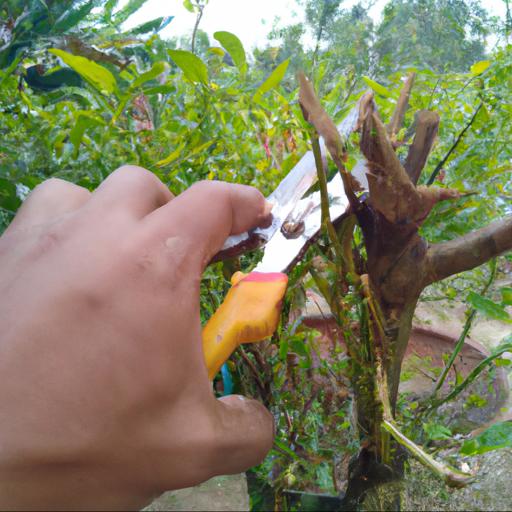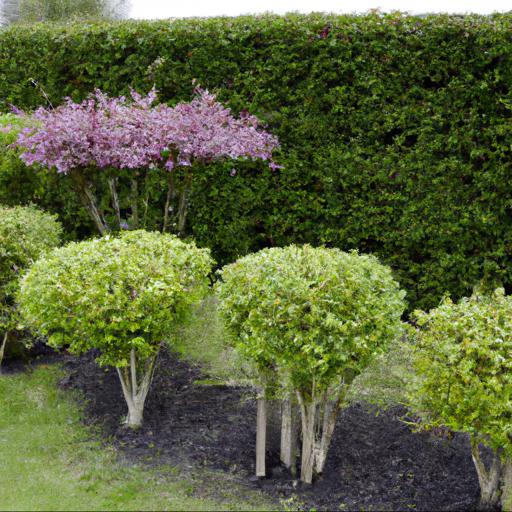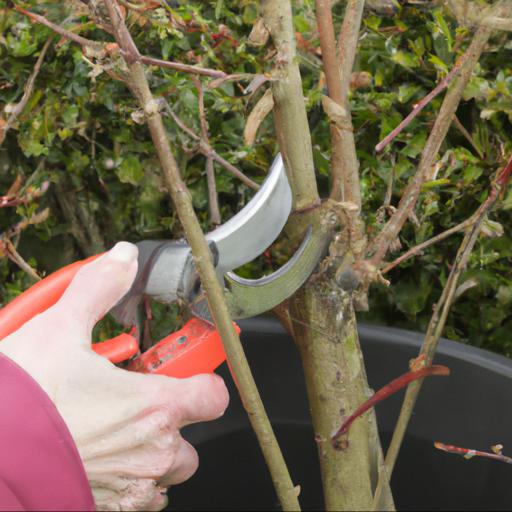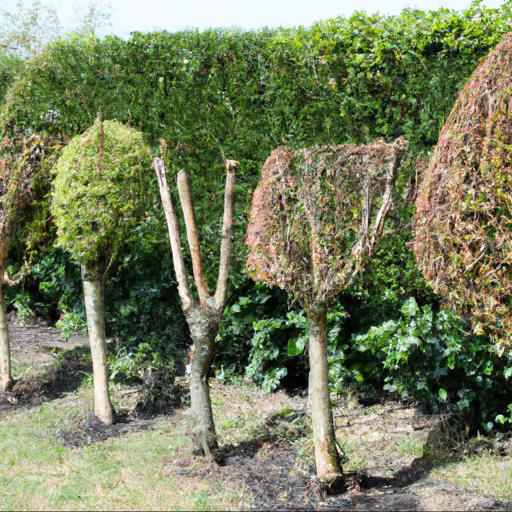Are you looking for a way to spruce up your outdoor space? Pruning your shrubs after they have finished flowering is a great way to keep your garden looking its best.
There are seven shrubs in particular that are best to prune after flowering: forsythia, weigela, butterfly bush, caryopteris, potentilla, spirea and viburnum. Pruning these shrubs after blooming will help them to look their best and ensure healthy growth for the following season. Read on to find out more about pruning these seven shrubs and how to do it correctly.
Benefits of pruning after flowering

As the days become longer and brighter, now is the perfect time to start thinking about pruning your shrubs. Pruning can be an intimidating task and many people are not sure which shrubs to prune and when.
By taking the time to prune after flowering, you can ensure your shrubs will remain healthy and look great throughout the season. Here are seven popular shrubs that should be pruned after flowering: Hydrangea: The hydrangea is an excellent choice for adding color and texture to your garden.
After the stems have finished blooming, prune them back to two thirds of their size. This will encourage the bush to produce more blooms in the following season.
Forsythia: Pruning is essential for Forsythia to keep it in shape and promote more flowers for next year. After flowering, clip the tips of the branches back to encourage branch and flower development.
You can prune up to a third of the branches if the shrub is overgrown to encourage new growth. Weigela: Weigela is a great addition to any garden or landscape and needs little maintenance apart from pruning in late spring after flowering.
Cut back the tips of the stems by a third to a half their length to create a more even shape and encourage strong growth.
Lilac: Lilacs are beautiful bushes that bloom annually in late spring. Once the blooms have finished, prune the branches back to two thirds of their length to promote healthy new growth and prepare it for the following seasons. Azalea: Azaleas are another popular shrub that should be pruned after flowering. Prune the dead and damaged branches and lightly thin out the plant to shape the shrub and encourage additional blooms. Rose: When it comes to pruning your roses, it’s important to make sure you’re pruning after flowering. Prune slashing cane back to around two thirds of their length to promote strong, robust growth and to encourage new buds for the following season. Mock Orange: This flowering shrub is known for its fragrant white blooms and its ability to brighten up a garden quickly. Prune back the tips of the branches to two thirds their length following flowering to encourage branching and more blooms the next year. Pruning your shrubs after flowering is an essential part of maintaining them throughout the season. Taking the time to prune correctly will ensure your shrubs look great and keep blooming over the years. If you’re not sure which shrubs to prune and when, these seven popular shrubs are a great place to start.
Seven shrubs to prune after flowering

Gardeners all over the UK are familiar with the importance of pruning their shrubs after they have completed blooming. Pruning, a process whereby dead and overgrown stems are removed, not only ensures the health of existing plants but also allows for new growth and fresh blooms to come in.
Pruning can be tricky, and it’s important to know what shrubs should be pruned and when. Here are seven shrubs to prune after flowering to ensure a flourishing garden:The first of these shrubs is forsythia—a vibrant shrub which is renowned for its early and vivid yellow blooms. Considered a spring-flowering shrub, forsythia should be pruned after the blooms die off to encourage the potential for greater sun exposure and the production of new growth.
Light pruning—several inches in length—is preferable as overly excessive shearing can reduce the potential of new blooms. The second of these blooming shrubs is quince, a deciduous shrub with beautiful white-pink blossoms. While it is a popular rootstock for quince trees, quince shrubs should also be pruned after flowering.
Again, it’s important to be aware of the severity of pruning to ensure the future health of the shrub. A light trimming of a sixth to a fourth of its height is considered the right amount.
Third on this list of pruning shrubs is the citrus family; both lime and lemon trees should be pruned after flowering as a regular maintenance routine. Pruning these trees will not only promote the health of existing flora but also help regulate growth of new branches and bright pink blossoms.
A light trimming off of stems no greater than three centimetres will suffice. It is important to avoid removing any leaves from the stem, however, as this can revive the growth of bacteria on the plant. Fourth, the butterfly bush should also be pruned after flowering, preferably during the summer months.
This shrub is unique as it produces a full set of flower heads, which attract beneficial pollinators such as bees and butterflies to the garden. To promote an even flowering pattern, the shrub should be trimmed back twice during the summer months to allow for less competition among the flower heads. Fifth, the winter-flowering variety of the hydrangea is a perfect choice for the autumn season. This shrub will produce sweet pink and white blooms throughout the colder months, which should be pruned back to approximately half a foot above ground level once the flowers have died off. Doing so will encourage new growth of blooms in the upcoming season. The sixth shrub on this list is snowberry. While snowberry is considered an evergreen plant, this shrub should still be pruned back to promote healthy growth. If pruning to a desired shape or size, it is important to be aware that this shrub can take up to twelve months to fully recover from the pruning process. Lastly, lilacs should also be pruned after flowering. While lilacs are considered a deciduous shrub, their blooms only last for about two weeks and should thus be pruned shortly afterwards to ensure future health and blooming of the shrub. When pruning, it is recommended to cut no more than a third of the shrub’s height to remove any deadwood or excess stems, and only two or three stems should be removed at a time. Pruning shrubs after flowering is vital for the overall health and longevity of a garden. Before selecting a shrub to prune, it is essential to be aware of the species, the timing of pruning, and the severity of the process. Proceeding with these parameters in mind will ensure a flourishing and vibrant garden in the upcoming months.
Pruning tips for each shrub

Pruning shrubs after flowering is one of the most important tasks of a garden expert. While some shrubs can be pruned before or during flowering, other shrubs should be pruned only after they have finished flowering. Knowing the right time to prune and which shrubs to prune can make a tremendous difference in the health and beauty of your garden.
The following seven shrubs need to be pruned after they have finished flowering: Hydrangeas, Forsythias, Lilacs, Buddleias, Spireas, Weigela and Ribes. Hydrangeas are deciduous shrubs with thick, round leaves and beautiful, bell-shaped flowers.
Prune Hydrangeas just after they have finished flowering. Trim back the spent flower heads and cut out any dead, damaged or diseased branches. Also, remove any crossing branches to improve air flow and help prevent disease.
It may be necessary to prune these shrubs more than once a year to keep them healthy and looking attractive. Forsythias are an early-flowering shrub with bright yellow blooms in early spring.
These shrubs can be pruned drastically after flowering to control its size and shape. Trim back the flowering stems to a few inches from the base of the plant and any crossing branches.
Pruning forsythias after flowering will help promote more flowers for the following year. Lilacs are summer-blooming shrubs with fragrant, purple blooms. After the blooms have faded, it is important to prune any dead or diseased branches.
Remove one-third of the oldest stems at the base of the plant and any crossing branches to help keep the shrub healthy. Doing this will also help keep the size and shape of the shrub in check. Buddleias are best known for their fragrant and colourful flowers that attract butterflies. Prune Buddleias after flowering to help promote more blooms for the following year. Trimming back the flowering stems and removing any diseased or dead branches helps keep the shrub looking healthy. Spireas are deciduous shrubs with delicate foliage and flowers in shades of white, pink, and yellow. These shrubs are best pruned after they have finished flowering. Trim back the spent flower heads and remove any dead or diseased branches. Pruning can also be done to control the shape and size of the shrub. Weigela is a popular deciduous shrub with deep-pink flowers in early summer. Prune Weigela after the flowers have faded. Trim back the spent flower heads and any crossing branches. Also, remove any straggly or weak stems. Pruning will help keep this shrub looking neat and healthy. Ribes, such as red currant and white currant, are popular shrubs with edible fruits. After the shrub has finished flowering, cut back any dead or diseased branches. Removing old stems and crossing branches will help promote more blooms for the following year. As a garden expert, it is important to know the right time to prune and the best shrubs to prune after flowering. Pruning the seven shrubs – Hydrangeas, Forsythias, Lilacs, Buddleias, Spireas, Weigela and Ribes – after they have finished flowering will help ensure the ongoing health and beauty of your garden.
Final Touch
This article discussed seven shrubs to prune after flowering, including rhododendrons, azaleas, hydrangeas, cotoneasters, viburnums, androsaces, and deutzias. Pruning these shrubs after flowering will help promote healthy growth and encourage more blooms in the future.
Proper pruning techniques should be used to ensure the shrubs remain healthy and attractive.
FAQ
What are the best tools to use when pruning shrubs?
The best tools to use when pruning shrubs are pruning shears, loppers, and hedge shears.
How often should shrubs be pruned after flowering?
Shrubs should be pruned after flowering once a year, usually in late spring or early summer.
What are the benefits of pruning shrubs after flowering?
The benefits of pruning shrubs after flowering are to promote healthy growth, encourage more blooms, and maintain a desired shape. Pruning helps to remove dead or diseased branches, and can also help to reduce the size of the shrub if needed.
What are the most common shrubs that should be pruned after flowering?
The most common shrubs that should be pruned after flowering are roses, lilacs, forsythia, and rhododendrons.
How can I tell when a shrub has finished flowering?
When the shrub has stopped producing flowers and the petals have all fallen off, it has finished flowering.
What are the best techniques for pruning shrubs after flowering?
The best techniques for pruning shrubs after flowering include deadheading, thinning, and shaping. Deadheading involves removing spent flowers and seed heads to encourage new growth. Thinning involves selectively removing branches to reduce overcrowding and promote air circulation. Shaping involves selectively pruning branches to give the shrub a desired shape.

